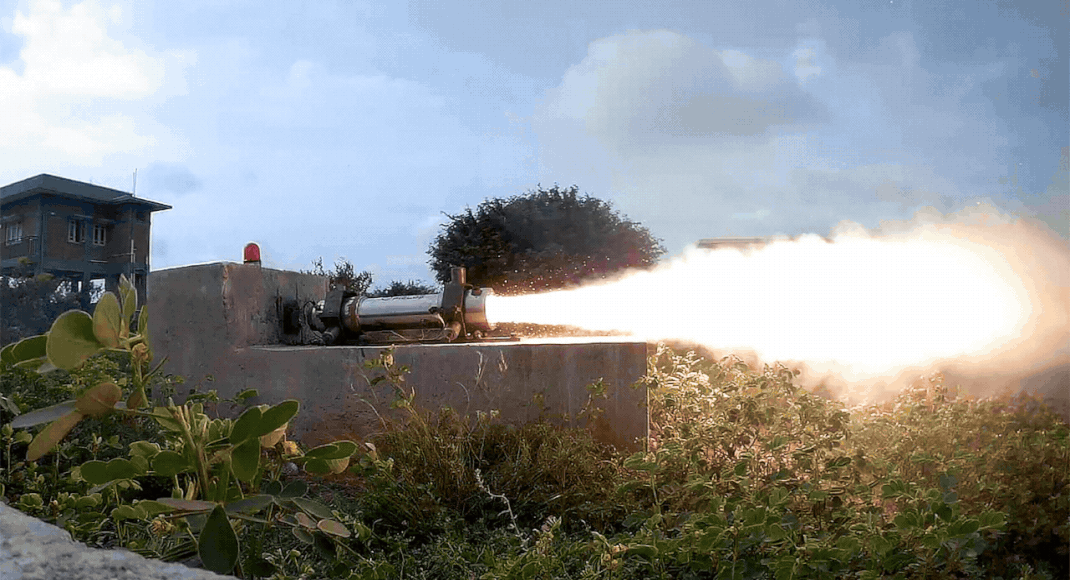India
B’luru startup SpaceFields tests India’s first AeroSpike rocket engine | India News – Times of India



BENGALURU: IISc incubates space startup Space fields has successfully completed a hot fire test of the country’s first AeroSpike Rocket engine. The static test campaign for the 168mm rocket engine took place at the company’s Propulsion Test Facility, located at the Challakere campus of the Indian Institute of Science (IISc), about 200 km from Bengaluru.
“The test produced impressive results, with the engine reaching a maximum recorded pressure of 11 bar and a peak thrust of 2000 N. The total impulse generated during the test reached 54,485.9 Ns, using an HTPB-based composite fuel,” Apurwa Masookco-founder and CEO, told TOI.
SpaceFields selected grade 5 titanium (Ti-6Al-4V) as the primary material for the engine’s construction, citing its superior strength-to-weight ratio compared to conventional materials such as Inconel or steel. This choice provides significant weight reduction while maintaining the structural integrity necessary to withstand the extreme pressures and thrusts generated during operation.
“A key innovation in the engine design is the use of a patented GFRP-based ablative thermal insulation to protect the aerospike surface. This composite insulation liner undergoes pyrolysis above 1400K and has been tested to withstand temperatures up to 3000K,” the company said.
The AeroSpike design offers a unique advantage over traditional bell nozzles: altitude compensation. This feature allows for optimal efficiency in various pressure regimes, potentially leading to reduced staging and fuel requirements for orbital missions. SpaceFields is also investigating ways to incorporate thrust vectoring into the AeroSpike engine, further enhancing its capabilities.
This successful test marks a milestone in the development of space technology and could potentially pave the way for more efficient and cost-effective space launch systems in the future.
SpaceFields, which has received funding from Startup India Seed Fundand additional grant support from Boeing India, the government of Karnataka and the government of Odisha raised $800,000 (Rs 6.5 crore) in February, which went towards development and testing of critical hardware and various subsystems, energy materials R&D and expansion of the company’s team.
“The test produced impressive results, with the engine reaching a maximum recorded pressure of 11 bar and a peak thrust of 2000 N. The total impulse generated during the test reached 54,485.9 Ns, using an HTPB-based composite fuel,” Apurwa Masookco-founder and CEO, told TOI.
SpaceFields selected grade 5 titanium (Ti-6Al-4V) as the primary material for the engine’s construction, citing its superior strength-to-weight ratio compared to conventional materials such as Inconel or steel. This choice provides significant weight reduction while maintaining the structural integrity necessary to withstand the extreme pressures and thrusts generated during operation.
“A key innovation in the engine design is the use of a patented GFRP-based ablative thermal insulation to protect the aerospike surface. This composite insulation liner undergoes pyrolysis above 1400K and has been tested to withstand temperatures up to 3000K,” the company said.
The AeroSpike design offers a unique advantage over traditional bell nozzles: altitude compensation. This feature allows for optimal efficiency in various pressure regimes, potentially leading to reduced staging and fuel requirements for orbital missions. SpaceFields is also investigating ways to incorporate thrust vectoring into the AeroSpike engine, further enhancing its capabilities.
This successful test marks a milestone in the development of space technology and could potentially pave the way for more efficient and cost-effective space launch systems in the future.
SpaceFields, which has received funding from Startup India Seed Fundand additional grant support from Boeing India, the government of Karnataka and the government of Odisha raised $800,000 (Rs 6.5 crore) in February, which went towards development and testing of critical hardware and various subsystems, energy materials R&D and expansion of the company’s team.




